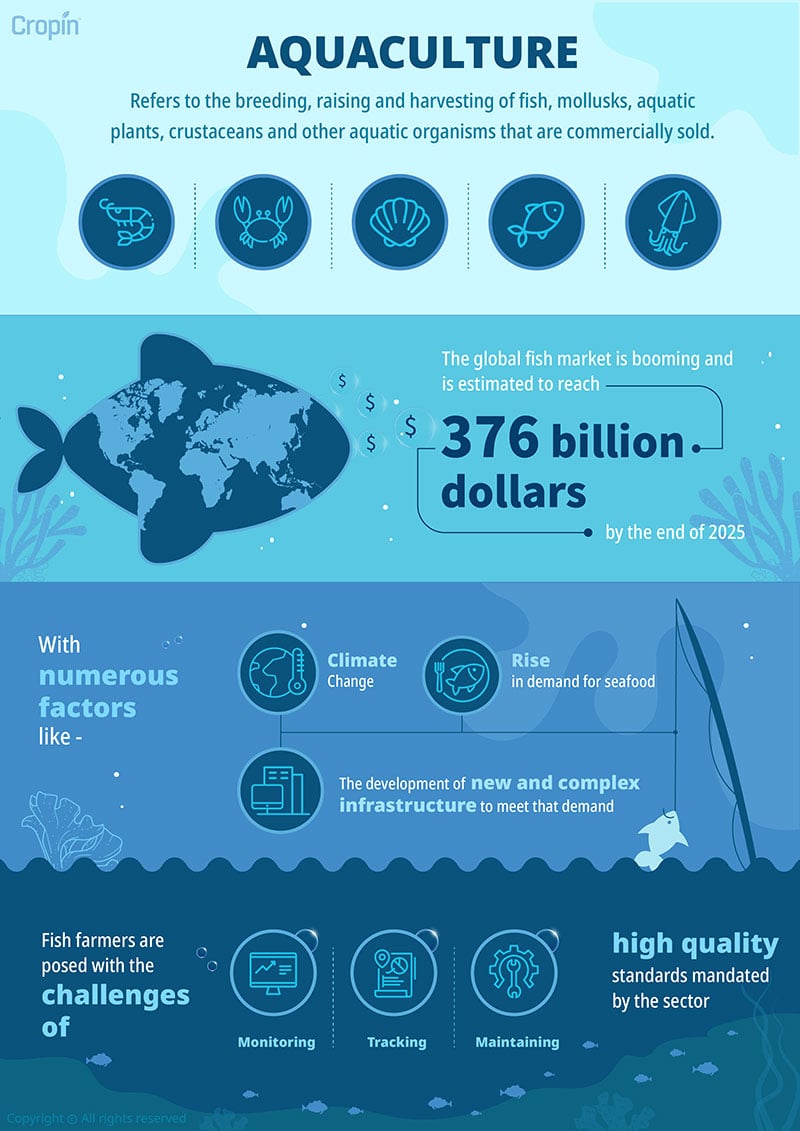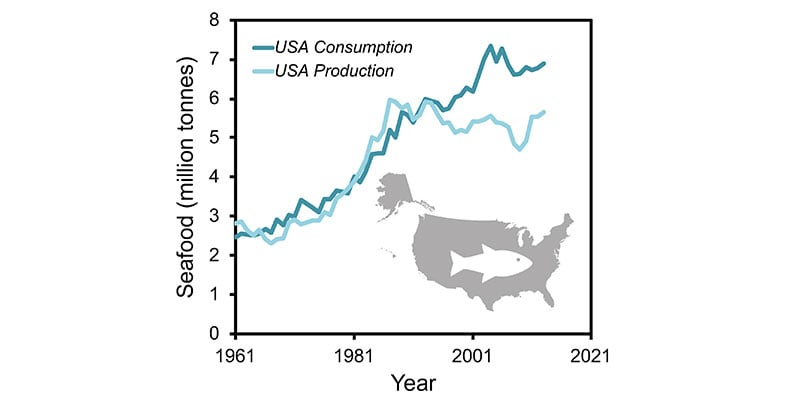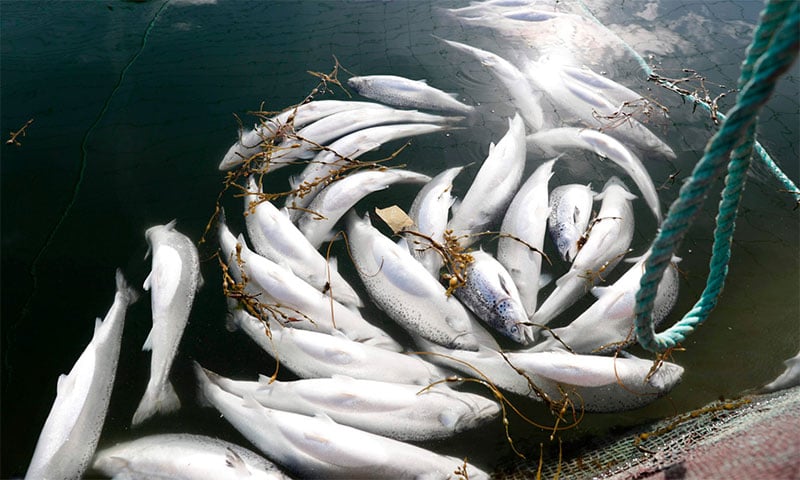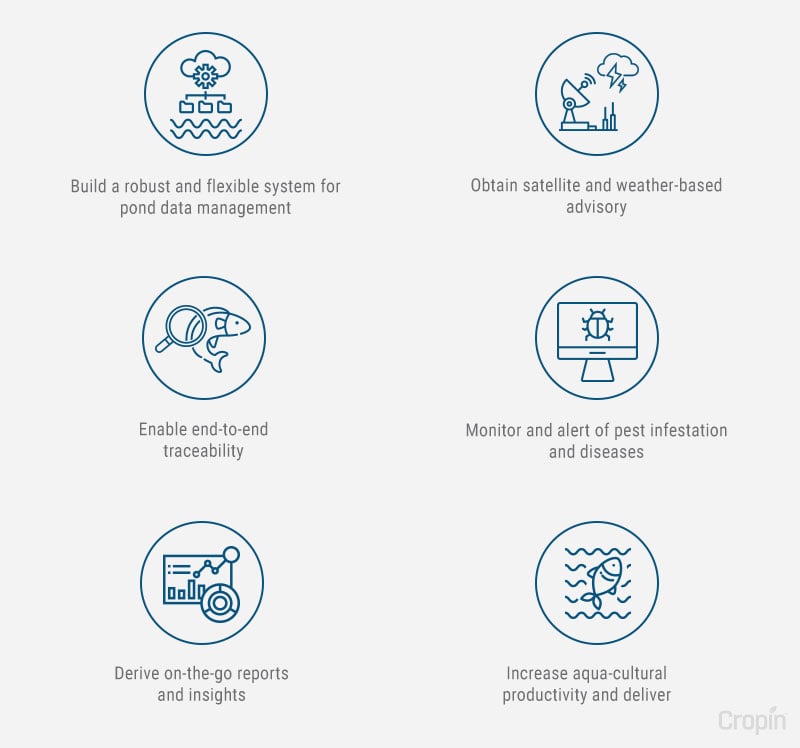Listen here:
Aquaculture could very well be the future for commercial seafood trading and consumption. Often misunderstood, fish farming can be tremendously advantageous and profitable to corporations and fish farmers alike, but it comes with its own set of challenges.
Aquaculture refers to the breeding, raising, and harvesting of fish, molluscs, aquatic plants, crustaceans, and other aquatic organisms that are commercially sold. The practice is considered environmentally responsible as it helps create healthier habitats and can also be used to rebuild the population of an endangered species. By contrast, commercial fishing places a huge burden on the ecosystem, as it tends to consume more than the environment can sustain and replenish.
The global fish market is booming and is estimated to reach 376 billion dollars by the end of 2025. With numerous factors like the rise in demand for seafood, climate change, and the development of new and complex infrastructure to meet that demand, fish farmers are posed with the challenges of monitoring, tracking, and maintaining the high quality standards mandated by the sector.

Cropin’s SmartFarm incorporates cutting edge data-driven technology to provide an end-to-end farm/pond data management solution to help fish farmers leverage data to make the best possible decisions for profitable outcomes.
The Challenges faced in the American Market
The average American consumes approximately 16 pounds of fish per annum, which has risen from 14.9 pounds in 2016. Shrimps represent one of the most consumed products in the American fish market, for their high nutritional value. In 2018, Americans consumed 1.64 billion pounds of shrimp, accounting for nearly 30% of the seafood market. This annual shrimp demand is largely met by the fish farms of South East Asia, where the aquaculture industry is highly fragmented and decentralized. Fish farmers in this region usually do not provide accurate data, sometimes do not deliver what was promised, or grow the wrong species. The lack of a centralized monitoring system makes it extremely difficult to trace the product’s quality as it progresses through the value chain.

One of the major concerns is health safety, due to the proclivity of fish farmers to use an excess of antibiotics (to increase shrimp longevity) and poor pond management (i.e. not being able to regularly clean and remove waste) that results in the growth of bacteria in the product, both these issues pose a very serious health threat and compromises the product quality.
One of the other challenges unique to the South East Asian fish farms is a lack of an accountability structure to ensure that social compliance policies are followed. It’s the lack of traceability and monitoring mechanisms of the processes which makes it incredibly difficult for corporations to meet the expected standards.
Cropin’s SmartFarm is an end-to-end farm data management solution that monitors the various processes leading up to harvest. The solution leverages advanced technologies such as satellite imagery processing to provide accurate real-time insights strengthened by ground-truth data to facilitate efficient operations and to improve overall efficiency and output predictability. With its customizable and easy-to-use platform, you can gain regular updates, insights and advisories ensuring an efficient and accountable process.
The Climate Crisis and the European Aquaculture Industry:
Unlike Southeast Asia, the European fish farming industry is highly matured and organized with set gold standards and certifications followed in practices, sadly though, the industry cannot escape the current climate crisis.

Rising global temperatures alter oceanographic conditions like water temperature, currents, wind speed, and waves. There has also been a significant increase in the occurrences of extreme weather phenomena that can seriously damage species that are sensitive to physiological stress, consequently affecting their growth and development.
Fish usually thrive in a specific temperature bracket (called optimal temperature), which varies with species; a rise in water temperature can also become a breeding ground for pathogens and parasites, making fish and other produce susceptible to infection/infestation. This also disrupts the aquafarms ecosystem which usually is designed to be symbiotic and has foolproof checks and balance mechanism to ensure optimal growth and reduce the mortality rate of the product.
Even a marginal elevation of temperatures of these ecosystems can have a detrimental impact. For example, in 2019, the Norwegian industry lost 8 million salmons (approximately 8,200 tonnes) due to algae blooms that can thrive in nutrient-rich warm water. The same phenomenon occurred in Chile in 2016, killing nearly 27 million salmons. Chile is the largest producer of Salmon in Latin America and lost 800 million dollars (about 20%) of the country’s annual production.
Unlike agriculture, aquaculture is faced with the unique challenge of constantly monitoring the fish growth rate, feed requirement, and mortality rate of numerous fish species. It has become apparent that if aquaculture farming companies wish to stay profitable and avoid losses, they need to adopt better monitoring and data management techniques to help them make informed choices on pond/aqua farm management and help safeguard their stock against fluctuations in weather.
What Can SmartFarm Help You Achieve?
Set preemptive protocols with SmartFarm’s smart weather engine predictions, receive alerts of extreme climatic conditions and manage production cycles in areas of volatile weather. You can also leverage the solution’s ‘Advance Remote Sensing’ capabilities to measure the pH levels of your fish farms to help you frequently monitor the effectiveness of fish farming techniques and practices.
Be able to track precipitation rates to help you keep track of the aqua farm’s hydro-climate, water levels, and evaporation rates. Also, be able to plan and manage your Water Budgets during dry periods to avoid crossing the threshold and damaging/losing your stock.
By leveraging big data analytics and satellite image processing for efficient tracking, managing, and monitoring of every step from input to execution, you can achieve a data-driven aquaculture farming practices, which will improve predictability and help boost output; all this on a single platform.
What’s the future of aquaculture?
It’s not all doom and gloom if fish farmers/enterprises can gain regular insights on the climate and weather and keep constant track of water quality, composition, and temperature they will be able to obtain successful results at the harvesting stage. The Climate Crisis has undoubtedly left an indelible mark on the aquaculture value chain and will compel all stakeholders in the industry to improvise.
Digitalization in the aquaculture industry is inevitable and important in the long run for fish farmers and corporations alike. With the trend shifting towards a more data-driven process, the industry stands to benefit from this movement and meet the challenges of climate change ultimately helping them maintain the high standards of the sector and regulate product quality for safe consumption.
Cropin’s state-of-the-art farm management solution SmartFarm can help you:
-
Build a robust and flexible system for pond data management
-
Obtain satellite and weather-based advisory
-
Enable end-to-end traceability
-
Monitor and alert of pest infestation and diseases
-
Derive on-the-go reports and insights
-
Increase aqua-cultural productivity and deliver consistent quality
and do much more.

Cropin is a trusted partner for many multinational enterprises, financial institutions, development aid agencies, and numerous governmental entities around the globe.
Want to know if this is the right fit for you? Speak to our team of experts by scheduling your demo today!






